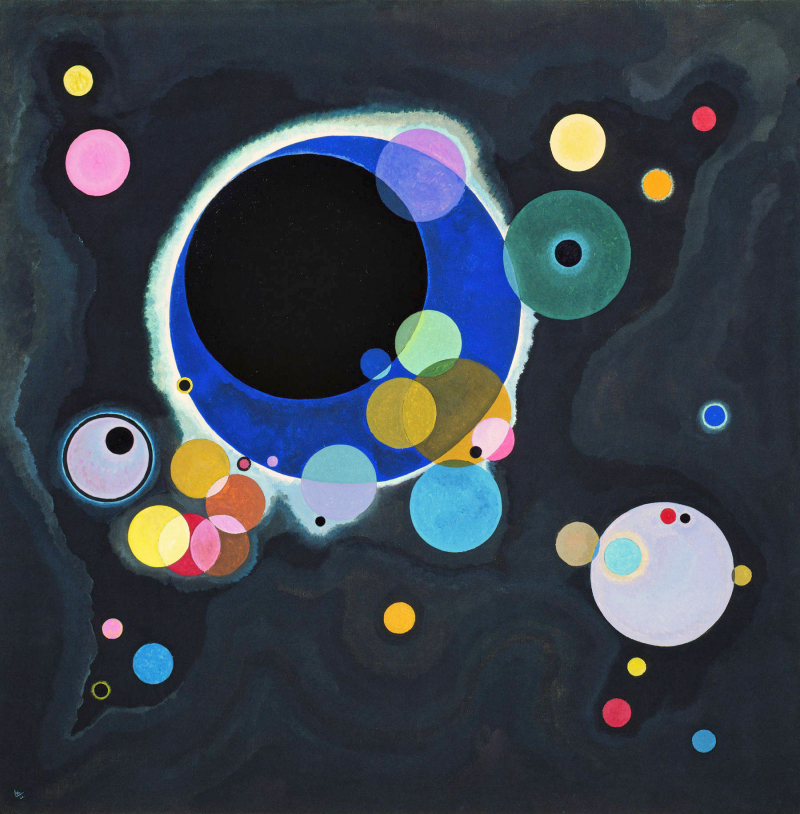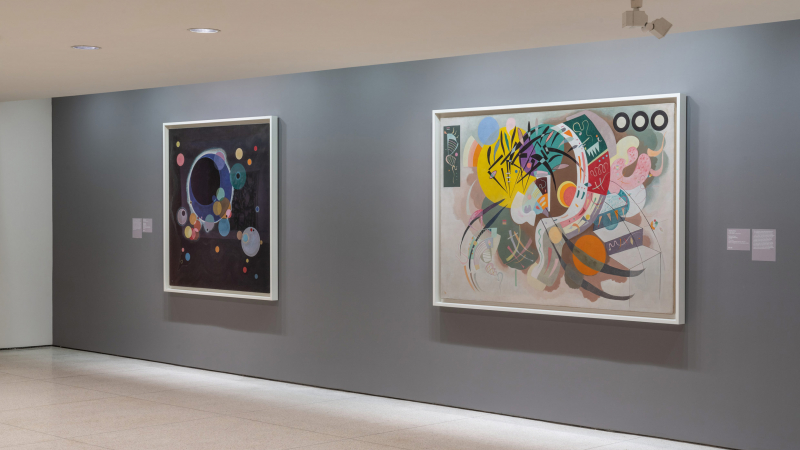Several Circles
"The circle is the synthesis of the greatest oppositions," Kandinsky said. It blends the concentric and eccentric in a single, balanced form. It is the clearest indication of the fourth dimension of the three primary forms." Kandinsky created a series of ten works in the 1920s in which the circle is the only form.
This series culminated in his painting Several Circles, which he considers to be his most important work in expressing the spirit of the circle. The picture is composed of circles that have been meticulously placed on a black background, emphasizing their size for the viewer. Kandinsky's emphasis on the expressive content of abstract forms is seen in Several Circles.
The diversity in color and size of the circles creates an abstract feeling in the piece. The circles themselves use a limited color palette and accentuate the Suprematism that is frequently seen in Kandinsky's work, which is an art movement that focuses solely on basic geometric forms. Several Circles' weightiness and depth work to produce a sense of cosmic harmony and, as a result, strive to establish both emotional and spiritual connections with individuals who watch it.
Year: 1926
Style: Geometric Abstraction
Location: The Guggenheim, New York, United States









